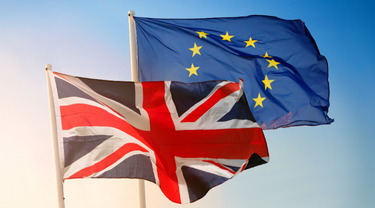For centuries, Canada has been a trading nation. Today, the trade of goods and services represents 67% of the country’s gross domestic product (GDP), making it one of our major economic drivers.

Free trade agreements give Canada preferential access to 51 countries, enhancing our position in the global market. With 15 free trade agreements (FTAs) in place and many others in the works, Canadian companies can unlock opportunities on five continents and reach 1.5 billion consumers in 51 countries.
FTAs reduce trade barriers and lower customs and duty charges for Canadian exporters doing business in these international markets. FTAs also create a predictable and transparent trade and investment environment, which reduces risk and provides new avenues for growth.
“Tariff liberalization and easier procedures are the cornerstone of trade agreements for Canadian companies with a view to increasing their competitiveness, exporting opportunities and higher revenues in the international arena,” says Jorge Rave, Export Development Canada’s (EDC) regional vice-president for Latin America and the Caribbean.
Leveraging these trade deals becomes increasingly important as tariffs from the United States—Canada’s leading trading partner—continue to be imposed or threatened.
What’s a free trade agreement?
An FTA clearly outlines the rules that govern trade between the member countries. Generally, an FTA lowers, or removes, tariffs and can also eliminate non-tariff barriers, including product standards, licences and quotas.
Agreements can be bilateral, like Canada’s FTA with the Republic of Korea, or multilateral, like the Comprehensive and Progressive Agreement for Trans-Pacific Partnership (CPTPP), which involves Canada and 10 other countries (11 when the United Kingdom joins).
What are the benefits of free trade agreements?
Besides simplifying the trade process and giving preferential access to certain markets, FTAs offer many benefits:
- Economic growth: FTAs open new markets for businesses, promote and protect foreign investment and boost GDP in participating countries.
- Reduced or no duties: Depending on the agreement, FTAs bring down duties and can even eliminate them.
- Improves relations: FTAs strengthen trade between signatories and can foster commitments to broader goals such as addressing environmental issues and protecting human rights.
- Enticement to new markets: With an FTA, Canadian exporters have an advantage over their competition in foreign markets.
- Simplifies processes: FTAs clarify trading rules, removing the guesswork of complicated concepts such as rules of origin and offer preferential rules that can simplify how Canadians set up operations beyond our borders.
- Less red tape: FTAs reduce the red tape of trade and increase predictability in regulatory requirements.
- Strengthens supply chains: FTAs support the development of diversified and resilient supply chains.
Canada free trade agreements
Canada has 15 free trade agreements in force, with more under negotiation.
FTAs in force:
- Comprehensive and Progressive Agreement for Trans-Pacific Partnership (CPTPP)
- Canada-United United States-Mexico Agreement (CUSMA)
- Canada-European Free Trade Association (EFTA)
- European Union Canada-European Union Comprehensive Economic and Trade Agreement (CETA)
- Canada-Chile Free Trade Agreement (CCFTA)
- Canada-Colombia Free Trade Agreement
- Canada-Costa Rica Free Trade Agreement (CCRFTA)
- Canada-Honduras Free Trade Agreement
- Canada-Israel Free Trade Agreement (CIFTA)
- Canada-Jordan Free Trade Agreement
- Canada-Panama Free Trade Agreement
- Canada-Peru Free Trade Agreement (CPFTA)
- Canada-Korea Free Trade Agreement
- Canada-Ukraine Free Trade Agreement (CUFTA)
- Canada-United Kingdom Continuity Agreement (Canada-UK TCA)
FTAs under negotiation with the following countries:
- Association of Southeast Asian Nations (ASEAN): Brunei Darussalam; Cambodia, Indonesia, Laos, Malaysia, Myanmar, Philippines, Singapore, Thailand and Vietnam
- Caribbean Community (CARICOM): Antigua and Barbuda, Bahamas, Barbados, Belize, Dominica, Grenada, Guyana, Haiti, Jamaica, Montserrat, Saint Kitts and Nevis, Saint Lucia, Saint Vincent and the Grenadines, Suriname, Trinidad and Tobago
- Dominican Republic
- Ecuador
- Guatemala, Nicaragua and El Salvador
- India
- Indonesia
- Mercosur: Argentina, Brazil, Paraguay, Uruguay and Bolivia
- Morocco
- Singapore
- Pacific Alliance: Chile, Colombia, Mexico and Peru
FTAs in the exploratory phase:
- China
- Thailand
- Turkey
- Philippines
FTA details
Multilateral agreements
Name: The Comprehensive and Progressive Agreement for Trans-Pacific Partnership (CPTPP)
Countries signed: Australia, Brunei Darussalam, Chile, Japan, Malaysia, Mexico, New Zealand, Peru, Singapore, Vietnam and the United Kingdom
Came into force: Dec. 30, 2018 for six countries; the last (U.K.) joined in 2024
Notable facts:
- This bloc represents 508 million customers and 15.6% of global GDP.
- Canadian exports to CPTPP countries rise by 25% a year after its signing.
- The agreement covers trade in goods and services, investment flows and the movement of people.
- Japan is a jewel of this agreement for Canada as it’s the world’s fourth-largest economy.
- Canadians have duty-free access to CPTPP countries for 94% of Canada’s agriculture and agri-food products; 99% of industrial products; 100% of fish and seafood products and 100% of forest products.
Key sectors of opportunity: Agriculture and agri-food, metals and minerals, industrial machinery and aerospace, fish and seafood, vehicles and automotive parts.
Name: Canada-European Union Comprehensive Economic and Trade Agreement (CETA)
Countries signed: Canada and Austria, Belgium, Bulgaria, Croatia, Cyprus, Czechia, Denmark, Estonia, Finland, France, Germany, Greece, Hungary, Ireland, Italy, Latvia, Lithuania, Luxembourg, Malta, Netherlands, Poland, Portugal, Romania, Slovakia, Slovenia, Spain and Sweden
Came into force: September 2017
- Notable facts: In addition to trade in goods and services and investment flows, the agreement also covers the movement of people.
- In 2017, CETA eliminated 98.4% of tariffs on non-agricultural Canadian goods entering the EU. By 2024, that number was 98.8% and it now includes virtually all goods and services. Canada has removed 98% of tariffs coming from the EU.
- CETA allows Canadians to bid on EU procurement contracts—an approximately $4.3-trillion market.
- The EU represents one-sixth of the global economy.
Key sectors of opportunity: Agri-food, cleantech/green transition, services and government procurement
Name: Canada-United States-Mexico Agreement (CUSMA)
Came into force: July 1, 2020 (superseded NAFTA)
Notable facts:
- CUSMA brings together 500 million people, representing almost 30% of the global economy.
- In 2023, the three countries imported nearly $2 trillion in merchandise from each other; nearly $5.3 billion in trade crosses the borders each day.
- In 2023, total Canada-U.S. trade exceeded $1.3 trillion with $3.5 billion worth of goods crossing the border daily.
- Canada is the largest export market for 36 states.
- Canada provides more crude oil to the U.S. than Mexico, Saudi Arabia and Iraq combined.
Key sectors of opportunity: Aerospace, agriculture, food and beverages, cleantech and defence and security
Name: Canada-European Free Trade Association (EFTA)
Countries signed: Canada, Iceland, Liechtenstein, Norway and Switzerland
Came into force: July 2, 2009
Notable facts:
- This is a goods-only agreement, but services may be added later.
- Canada exported $4 billion to the EFTA countries in 2024, up from $2.4 billion in 2009.
Key sectors of opportunity: Agriculture, food and beverages, cleantech, education, defence and security
You should also check out
Ensure your products meet CUSMA standards to avoid penalties and reduce trade risks.
Bilateral agreements
Asia/Indo-Pacific
Name: Canada-Korea Free Trade Agreement (CKFTA)
Came into force: Jan. 1, 2015
Notable facts:
- This was Canada’s first agreement in the Asia-Pacific.
- South Korea is a gateway to the wider Asia-Pacific region and well-situated to facilitate trade with the rest of Asia.
Key sectors of opportunity: Agriculture; defence and security; mining; oil and gas and sustainable technologies
Europe
Name: Canada-Ukraine Free Trade Agreement (CUFTA)
Countries signed: Canada and Ukraine
Came into force: Aug. 1, 2017
Notable facts:
- This agreement supports economic reform and development efforts in Ukraine
- A modernized FTA came into force July 1, 2024, after Russia’s full-scale invasion of Ukraine.
Key sectors of opportunity: Agri-food, energy and cleantech, infrastructure (including water systems, railroads, ports and airports, housing and health-care institutions)
Name: Canada-U.K. Trade Continuity Agreement (Canada-UK TCA)
Came into force: April 1, 2021
Notable facts:
- This agreement was designed to retain the benefits of CETA after Brexit (U.K,’s withdrawal from the European Union) and sees the elimination of 99% of tariffs on Canadian exports to the U.K.
- The U.K. is Canada’s fifth-largest trading partner and talks continue on a purpose-built Canada-U.K. free trade agreement.
Key sectors of opportunity Aerospace, agriculture, food and beverages, business and financial services, cleantech, defence and security
Latin America
Name: Canada-Chile Free Trade Agreement (CCFTA)
Came into force: July 5, 1997
Notable facts:
- Bilateral trade with Chile has tripled since the parties signed the agreement.
- In 2023, Chile exported $1.66 billion to Canada. Copper represented the largest export ($469 million) and Canada exported $829 million to Chile, with wheat dominating ($159 million).
Key sectors of opportunity: Cleantech, infrastructure, building products and related services, mining, aerospace and defence and forestry
Name: Canada-Colombia Free Trade Agreement (CCoFTA)
Came into force: Aug. 15, 2011
Notable facts:
- Each country must draft an annual report on the effect this unique agreement has had on human rights on their nation.
- Canadian exports have risen from $780 million in 2018 to $1.1 billion in 2024.
Key sectors of opportunity: Agriculture, food and beverages, defence and security, mining, and oil and gas
Name: Canada-Costa Rica Free Trade Agreement (CCRFTA)
Countries signed: Canada and Costa Rica
Came into force: Nov. 1, 2002
Notable facts:
- This agreement focuses mainly on trade in goods. Efforts to modernize it to include services are ongoing.
- In 2023, bilateral trade of goods between the two countries was $1.04 billion, with Canada exporting $320 million and importing $720 million.
Key sectors of opportunity: Agriculture, food and beverages, cleantech, information and communication technology (ICT) and infrastructure, building products and related services
Name: Canada-Honduras Free Trade Agreement (CHFTA)
Countries signed: Canada and Honduras
Came into force: Oct. 1, 2014
Notable facts:
- When talks on a regional agreement between Canada, Honduras, Guatemala, El Salvador and Nicaragua reached an impasse, Canada pursued this bilateral agreement, which came into force 14 years later.
- Two-way trade was $278 million in 2013 and jumped to $634 million in 2024.
Key sectors of opportunity: ICT, safety and security equipment, environmental technologies and agriculture
Name: Canada-Panama Free Trade Agreement (CPAFTA)
Came into force: April 1, 2013
Notable facts:
- Panama is a key business and services hub with a stable democracy. This agreement covers market access for goods, services, telecommunications, investment, financial services and government procurement.
- The FTA resulted in a 575% increase in two-way trade between the countries, with Canada exporting $718 million worth of goods to Panama in 2023.
Key sectors of opportunity: Agriculture, food and beverages, cleantech, infrastructure, building products and related services
Name: Canada-Peru Free Trade Agreement (CPFTA)
Came into force: Aug. 1, 2009
Notable facts:
- Peru ranks fifth overall for Canadians mining assets abroad.
- Peru is Canada’s second-largest bilateral trading partner and third-largest destination for Canadian direct investment in South and Central America.
Key sectors of opportunity: Agriculture, food and beverages, defence and security, infrastructure, life sciences and mining
Middle East
Name: The Canada-Israel Free Trade Agreement (CIFTA)
Came in force: Jan. 1, 1997
Notable facts:
- This was the first FTA Canada signed outside the Western Hemisphere.
- It was modernized in 2014 and 2018, to reduce technical barriers to trade and regulatory red tape
Key sectors of opportunity: Cleantech; agriculture; aerospace; information technology (IT) and life sciences
Name: Canada-Jordan Free Trade Agreement (CJFTA)
Came in force: Oct. 1, 2012
Notable facts:
- This was the first FTA Canada signed with an Arab nation.
- Bilateral trade in 2023 exceeded $326 million.
Key sectors of opportunity: Education, agriculture and agri-food, consumer products, life sciences and cleantech
Explore your next global market
Want to know more? Visit our country info page for the market you are considering, or our Country Risk Quarterly, which offers economic insights for Canada’s Top 75 trading partners.
To contact an EDC export advisor, visit our Export Help Hub.




